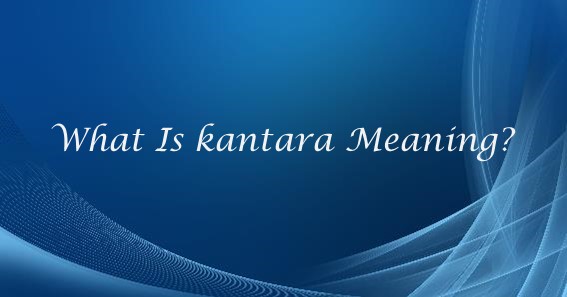Kantara, a term with a rich cultural and historical significance, encapsulates layers of meaning that intrigue and captivate the imagination. In this comprehensive exploration, we delve deep into the essence of Kantara, shedding light on its various interpretations and the profound impact it has had across different contexts and civilizations.
The Origins of Kantara
Ancient Roots and Linguistic Evolution
The origins of Kantara trace back to ancient civilizations, where it found its roots in the Arabic language. Derived from the Arabic word for “bridge,” Kantara symbolizes a physical structure connecting two points, but its significance extends far beyond mere physicality. The term transcends its literal meaning, embodying the concept of connection, transition, and passage.
Cultural Symbolism and Spiritual Connotations
Across diverse cultures and traditions, Kantara assumes symbolic importance, representing the journey of life, spiritual transformation, and the crossing of thresholds. In Islamic mysticism, the concept of “sirat al-mustaqim,” or the straight path, resonates deeply with the essence of Kantara, signifying the path to enlightenment and spiritual awakening.
Kantara in Literature and Art
Literary Interpretations and Symbolic Imagery
In literature and poetry, Kantara emerges as a powerful motif, evoking imagery of crossings, transitions, and encounters. Writers and poets often employ Kantara as a metaphorical device to explore themes of passage, transformation, and the quest for meaning. From the works of Rumi and Ibn Arabi to contemporary poets, the symbolism of Kantara continues to inspire creative expression and philosophical inquiry.
Artistic Depictions and Visual Representations
In the realm of art and visual culture, Kantara finds expression through various mediums, from paintings and sculptures to architectural marvels. Artists draw upon the motif of the bridge to convey notions of connection, unity, and the crossing of boundaries. Whether depicted as a physical structure spanning a river or as a metaphorical bridge between worlds, Kantara serves as a potent symbol of human aspiration and transcendence.
Kantara in Contemporary Discourse
Relevance in a Globalized World
In today’s interconnected world, the concept of Kantara resonates more than ever, reflecting the realities of globalization, multiculturalism, and intercultural dialogue. As societies navigate diverse cultural landscapes and encounter new perspectives, Kantara serves as a reminder of the bridges that unite us and the shared humanity that transcends differences.
Applications in Psychology and Personal Growth
Beyond its cultural and artistic significance, Kantara holds relevance in the realm of psychology and personal development. The metaphor of crossing bridges mirrors the process of self-discovery, resilience, and growth. By embracing the spirit of Kantara, individuals can navigate life’s challenges with courage, adaptability, and a sense of purpose.
Conclusion
In conclusion, Kantara emerges as a multifaceted concept that encompasses themes of connection, transformation, and transcendence. From its ancient origins to its contemporary relevance, Kantara continues to inspire awe and contemplation, inviting us to embark on a journey of exploration and discovery. As we traverse the bridges of life, may we find solace in the enduring symbolism of Kantara and the boundless possibilities it represents.





